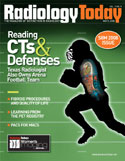
May 5 , 2008
A Coder’s Perspective on Computer-Assisted Coding Software
By Greg Schnitzer, RN, CCS, CCS-P, CPC, CPC-H, RCC, CHC
Radiology Today
Vol. 9 No. 9 P. 34
For nearly a decade, computed-assisted coding (CAC) software has been available to help coders. So what is this software all about, and how does it help?
CAC software is used to “read” dictated and transcribed documents that are in an electronic format, much the same way a spell-checking program reads a document. The software recognizes words and phrases, as well as the regions of the document in which those words and phrases appear, and the contexts of those words and phrases. It then “predicts” through intricate statistical analysis, elaborate algorithms and rules, or a combination of the two what the proper CPT and ICD-9-CM codes should be for the procedures and conditions it finds.
Using CAC
A radiology group or a billing company, for example, contracts with a CAC software coding companies and arranges for its dictated and transcribed radiology reports to be sent electronically to the CAC company via the Internet. The CAC company then submits the reports to its coding software server. The coded reports will either be sent back to the provider where they can be reviewed by a coder with a Web browser or straight to the provider’s billing system, if the organization is comfortable with certain types of reports bypassing a coder for review.
Typically, the interface that a coder uses displays the note on one side of the screen and the automatically assigned codes on the other. The coder uses this interface to review the notes, look at the codes assigned by the software, make any necessary coding changes, and then approve the report to go into the billing system. Afterward, the coder is instantly provided with the next note for review.
Because this is generally done via the Internet, the coding process can be decentralized, and the coder could be working from anywhere. This opens up new possibilities for organizations looking for top talent, enabling them to hire from any location. At the same time, it frees coders to live and work wherever they prefer.
Additionally, sophisticated natural language processing systems modernize compliance efforts and internal audits, both concurrently and retroactively examining the flow of information for correct codes, poor dictation, and other issues that can muddle the process.
How Does It Work
Sophisticated CAC software is not based solely on key words appearing in a document. To be a valuable tool for the coder, it must be more advanced than that. It must be able to determine when a procedure or condition appears in a context that allows it to be coded vs. where it should not be coded.
For example, consider the following sentences that would appear in a typical radiology note:
1. I see a coin lesion on the patient’s left lung.
2. The patient’s father has a coin lesion on the left lung.
3. I have confirmed that the coin lesion is now absent in the patient’s left lung.
4. I have ruled out the presence of a coin lesion on the patient’s left lung.
5. There is a questionable coin lesion on the patient’s left lung.
Few coders would have trouble determining that while the coin lesion is codable in the first example, it would not be codable in the other examples. Clearly, recognizing the mere presence of the words “coin lesion” is insufficient to code the note correctly. While coding a condition is relatively easy, CAC software must be sophisticated enough to recognize myriad contexts where a phrase like coin lesion may not actually be a codable condition.
How can software recognize and know when the condition appears in a codable context or noncodable context? The short answer is that there are different computational approaches. Books could be (and have been) written about computational linguistics and natural language processing, as well as how software can be taught to “understand” language patterns and make predictions based on similar documents it has seen in the past. In essence, CAC software, supported by natural language processing, coaches computers to understand the English language and read physicians’ dictated reports to assign appropriate codes for patient encounters. Sophisticated software algorithms are written and millions of coded notes are analyzed by a computer to see how human coders coded the notes. Based on all the coding humans did, the software statistically predicts and learns to emulate a team of coders.
So what does this all mean for a coder? In its first decade of actual use for coding physicians’ notes, the magic that CAC software performs has become more elaborate. Early on, CAC software involved the simplest of notes such as routine mammograms, chest x-rays, and x-rays of a limb to evaluate a fracture. The technology could accurately assign those codes without a coder’s review. Using CAC can reduce the demands on human coders by removing their involvement in simple and repetitive coding tasks.
Candidly, most coders—including me—would be glad to be rid of these radiology reports. Not only are these notes the low hanging fruit of coding, they’re also the drudgery of coding. For a coder, working with a CAC software tool can mean the difference between coding their 200th screening mammography report of the day or spending their time with the more interesting and complex reports.
CAC software has become a valuable coding tool, just as encoders became valuable tools 20 years ago. But be forewarned, like virtually every other industry, technology is changing how people work. Keeping up with the changes such as CAC helps coders continue to succeed and do their jobs even better. CAC elevates coders professionally, focusing on advanced coding work and offering experience in auditing and quality control, ultimately making coders more competitive in the market.
— Greg Schnitzer, RN, CCS, CCS-P, CPC, CPC-H, RCC, CHC, is a coding quality expert for CodeRyte, Inc.

